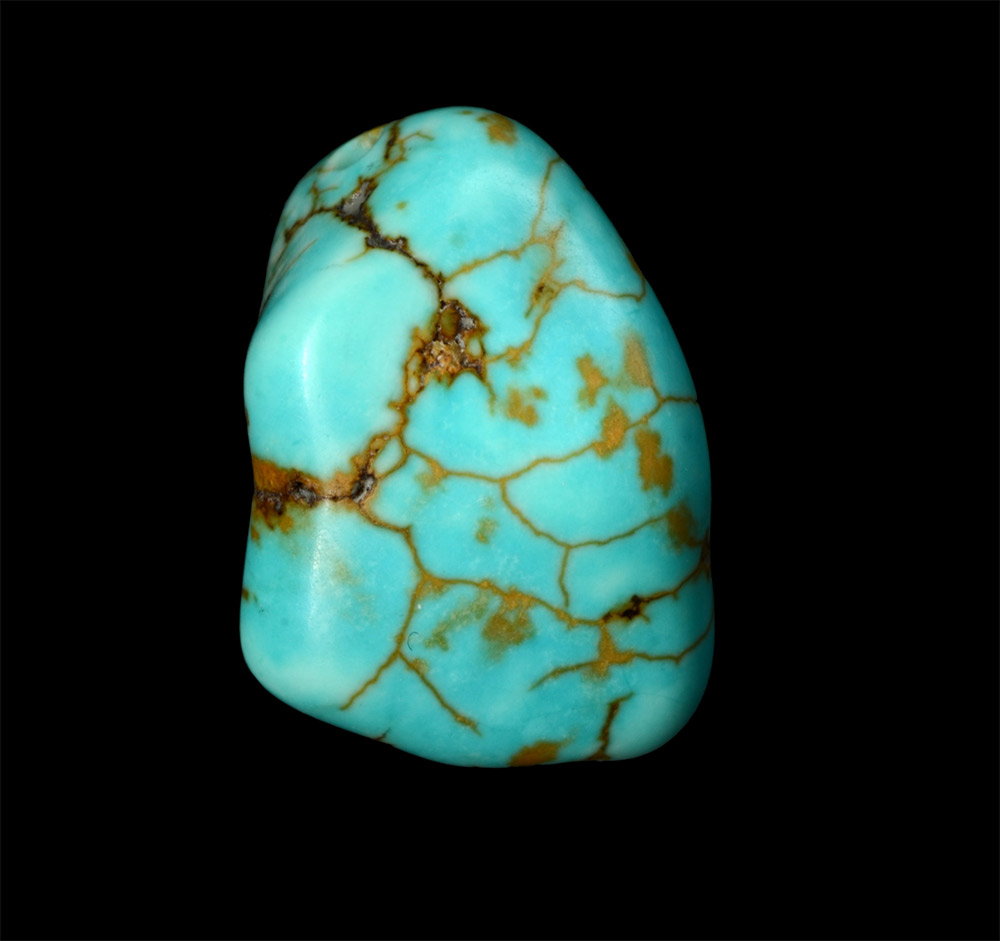Turquoise
Hydrated Copper and Aluminum Phosphate

Turquoise is probably the most valuable, non-transparent mineral in the jewelry trade. It was mined by Egyptians on the Sinai Peninsula as early as 6000 BC. and was transported to Europe through Turkey, accounting for its name, which means "Turkish" in French.
Turquoise is hydrated copper and aluminum phosphate -- CuAl6(PO 4)4(OH)8 4H2O -- that is used extensively as a gemstone. It is a secondary mineral deposited from circulating waters, occurring exclusively in desert and arid environments. Its appearance is blue to green, with waxy veins in aluminum-rich, volcanic or sedimentary rocks.
An opaque mineral with a slightly waxy luster, turquoise ranges in color from blue through shades of green to yellowish gray. An elegant sky blue, which provides an beautiful contrast with precious metals, is the most valued color for gem purposes. Some collectors prefer turquoise that is delicately veined within a matrix of impurities of limonite or other substances.
American Indians of Colorado, Arizona, Nevada and New Mexico have long fashioned turquoise into ornamental jewelry, inlays and carvings. The Navaho believed turquoise was a piece of the sky which has fallen to earth. The Apache thought it combined the spirits of the sea and sky to help warriors and hunters aim accurately. The Zuni believed that turquoise protected them from demons, while the Aztecs reserved turquoise for the gods; it was not to be worn by mere mortals. Montezuma's treasure, now displayed in the British Museum in London, includes a carved serpent covered by a mosaic of turquoise.
Because turquoise remains so popular today, much of the mass-market material has been dyed or color stabilized with resins to seal it and to improve color. Turquoise is often imitated by "fakes" such as the mineral chrysocolla.
TURQUOISE CHARACTERISTICS
Streak & Luster |
||
| - Color: sky blue to green & yellow-gray - Transparency: opaque - Streak: white with a greenish tint - Luster: dull to waxy |
Associated Minerals: pyrite, limonite, quartz and clays | |
-- Bob Katz
Related DesertUSA Pages
Share this page on Facebook:
The Desert Environment
The North American Deserts
Desert Geological Terms

Click here to see current desert temperatures!






